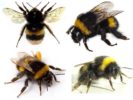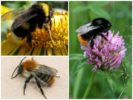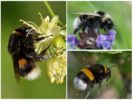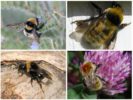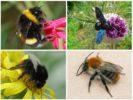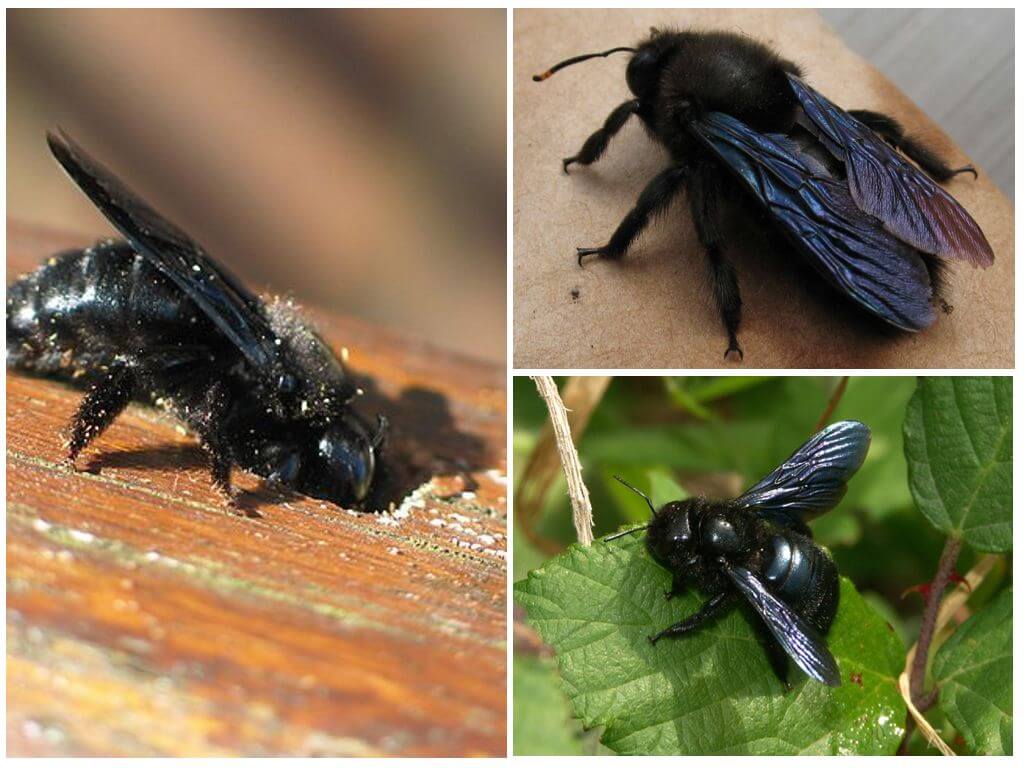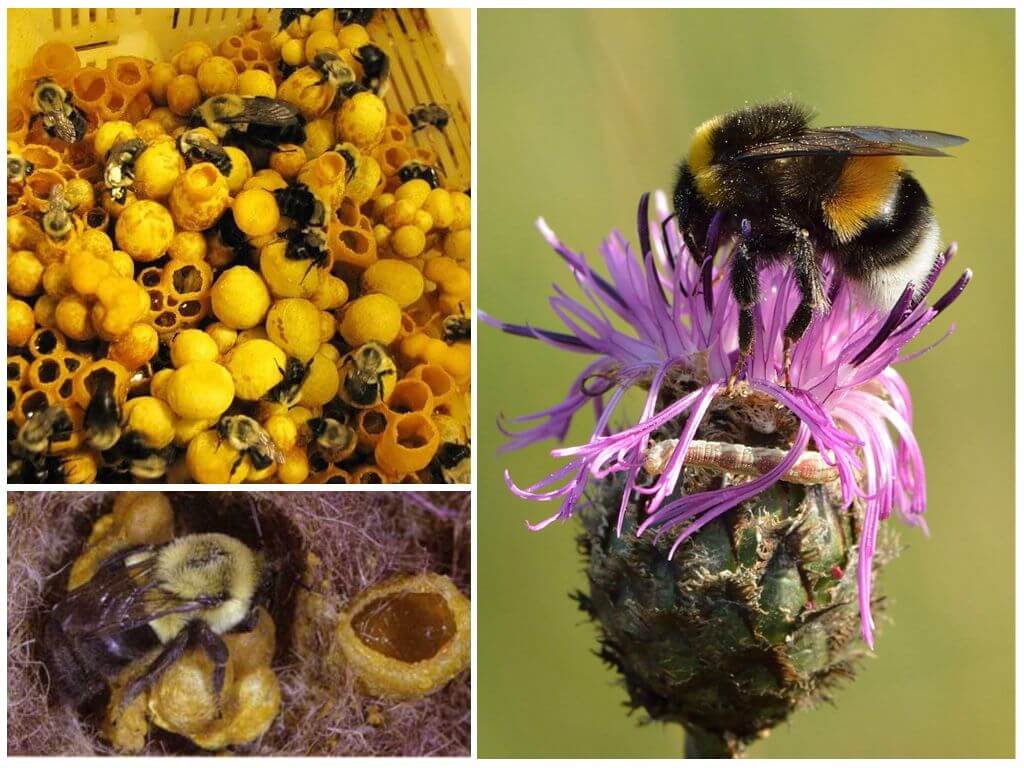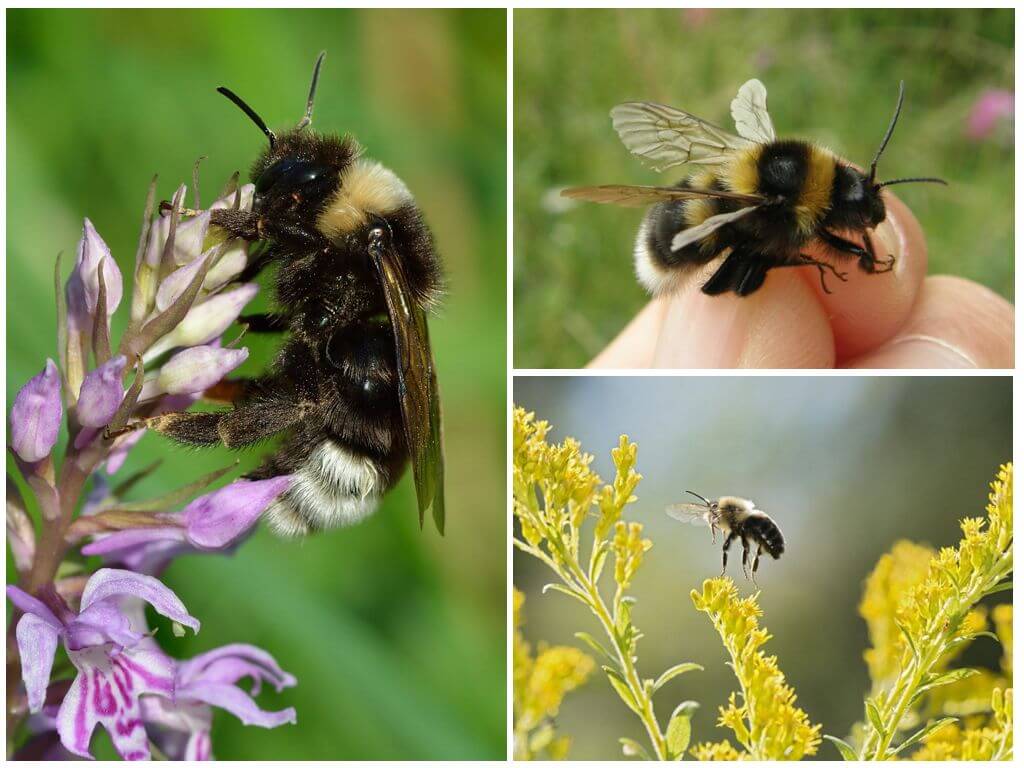- The appearance of a bumblebee
- Species of bumblebees
- Colorful bumblebees
- Bumblebees with a grayish tint
- Varieties of Bumblebees
Everyone saw a large, menacingly buzzing insect collecting pollen and nectar from flowers like bees. These are bumblebees from the family of real bees. In total, there are 300 species of bumblebees in the world, divided into 15 subgenus (previously there were 50, but now the number of subgenus has been reduced). The genus Bombus is part of the same family as the honey bee.
Where live
These insects withstand low temperatures. Where the bumblebee lives, other bees do not survive due to the cold climate. Bumblebees can often be found in the northern latitudes of Europe and in the mountains on the border with ice, where they are the only pollinators for plants.
Interesting!
Small garden bumblebee lives at 70 ° north latitude and has taken root in Iceland and New Zealand.
Specific traits
Bumblebees in most cases have similar external data, differing only in the size and color of the stripes. The body length of the female bumblebee is 1.3–2.8 cm, and that of the male is 0.7–2.4 cm. The exception is the Asian giant bumblebee living in East Asia. This huge bumblebee grows to 5 cm with a wingspan of 8 cm.
On a note!
Still from bites of the largest bumblebee In the world, dozens of people die every year.
The body of the insects is covered with bristles, and the baskets for collecting pollen are surrounded by straight, hard hairs. In these baskets, workers carry pollen equal to their own weight. The total number of legs in insects is 6. The abdomen of insects, like all bees, is not bent.
With its massive body and small wings, the bumblebee looks as if flies contrary to the laws of aerodynamics. But this opinion was formed when only planes with fixed wings flew. Now it has been precisely ascertained that these insects are completely “law-abiding”. A photo of a bumblebee demonstrates its structure and body size in relation to the wings.
Interesting!
The number of bumblebee wings flaps 400 times per second.
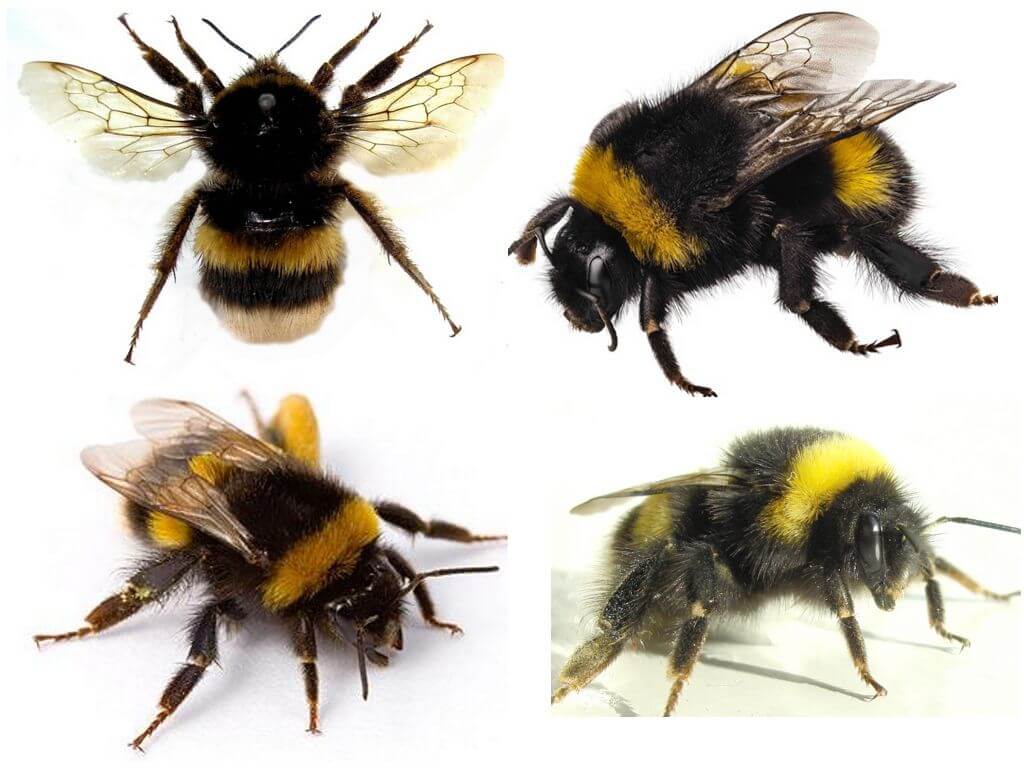
The question is how many eyes a bumblebee has, it’s very interesting, since it depends on what the speaker understands by the word “eye”. In our usual understanding: “an organ that sees a picture” - there are two eyes of a bumblebee. But if we consider with our eyes organs that perceive only the presence / absence of lighting, then three more are added. They are located between the main eyes on the back of the insect. In the close-up photo of the bumblebee, the parietal "photocells" are clearly visible.
Insects have powerful jaws with which they can bite painfully. The oral apparatus is also equipped with a long proboscis, with which insects extract nectar from flowers with a very deep little cup. The photograph clearly distinguishes the sucking proboscis.
Bumblebees feed on nectar, in the absence of honey plants it costs the plant sap, which they extract with the help of the jaws: they bite a hole in the stem. Under favorable conditions, in the summer, bumblebees eat nectar and pollen, sometimes completely smeared in it.
Gender differences
The head of the female is slightly elongated and rounded at the back of the head. In the male, the head can be almost round or triangular with a noticeable thin dashed line running along the front part and crown. The female has a rectangular upper lip with strongly curved mandibles overlapping each other when closed. The males have a gnawing apparatus that allows them to gnaw blades of grass.
In a female of any kind, the sixth sternite on the abdomen without rollers.The male on the second sternet lacks a median elevation. The abdomen of females ends with a sting. The "reusable" sting, since it has no notches, and the female can pull it out of the victim. The male bumblebee has no sting. Instead, he has heavily chitinized dark brown genitals.
Males on their hind legs lack characteristic “baskets”, the last pair of legs is pubescent. The degree of pubescence varies by species.
On a note!
Depending on the “specialization”, bumblebee females are called either a working individual or a bumblebee uterus.
Species of bumblebees
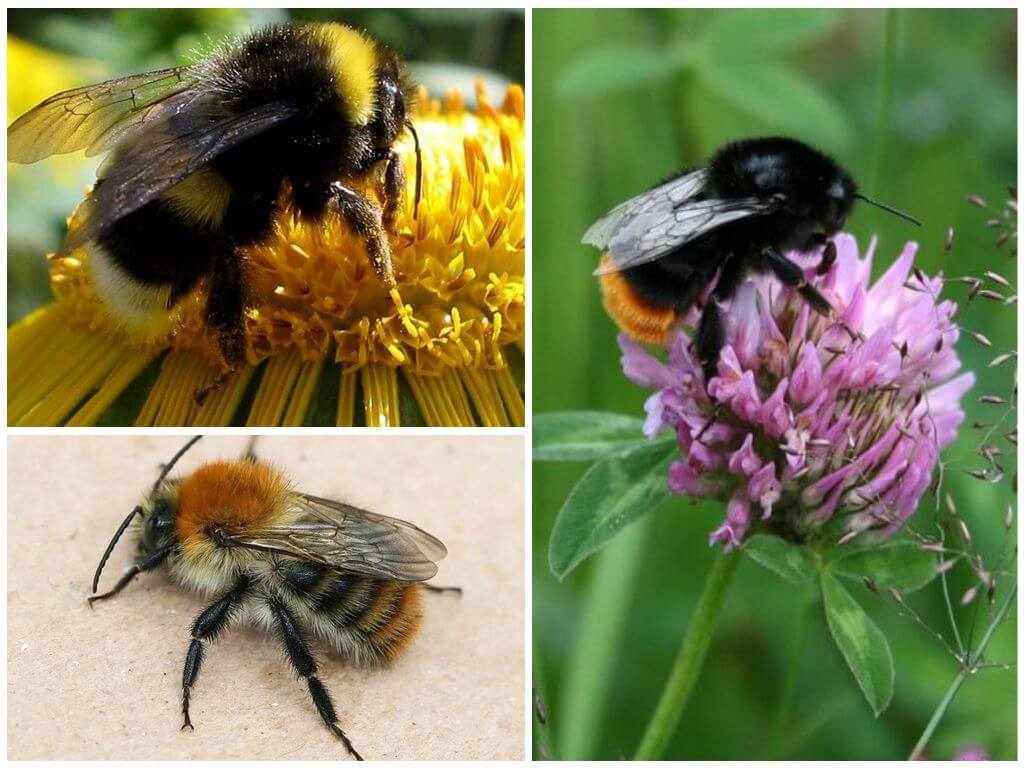
About 100 species of these beneficial insects live in Russia. The species composition varies depending on the territory. And some species of bumblebees in Russia are too rare to be of serious importance for agriculture. The names of the species are often indicated inaccurately both in Latin and in Russian: meadow, moss, stone and other species successfully nest in the forests; horse cannot be found in stables, he builds nests in meadows, trees, in forests. In fact, in the nature, bumblebees live where they managed to find a convenient place for a nest in any ecosystem, except for waterlogged ones. This complicates the classification of bumblebees, even for specialists.
Large bees are most conveniently separated by color:
- yellow-black-and-white motley;
- grayish-yellow with a red tip of the abdomen and a dark stripe on the back;
- buffy yellow with a black spot or stripe between the wings;
- gray with a black stripe on the back;
- black with a red tip of the abdomen;
- brown with a light tip of the abdomen and a dark stripe across the abdomen;
- yellow and red.
These varieties of bumblebees are very useful as pollinators of clover, but the cuckoo bumblebee can be masked under them.
Photos of various species of bumblebees and their brief description below.
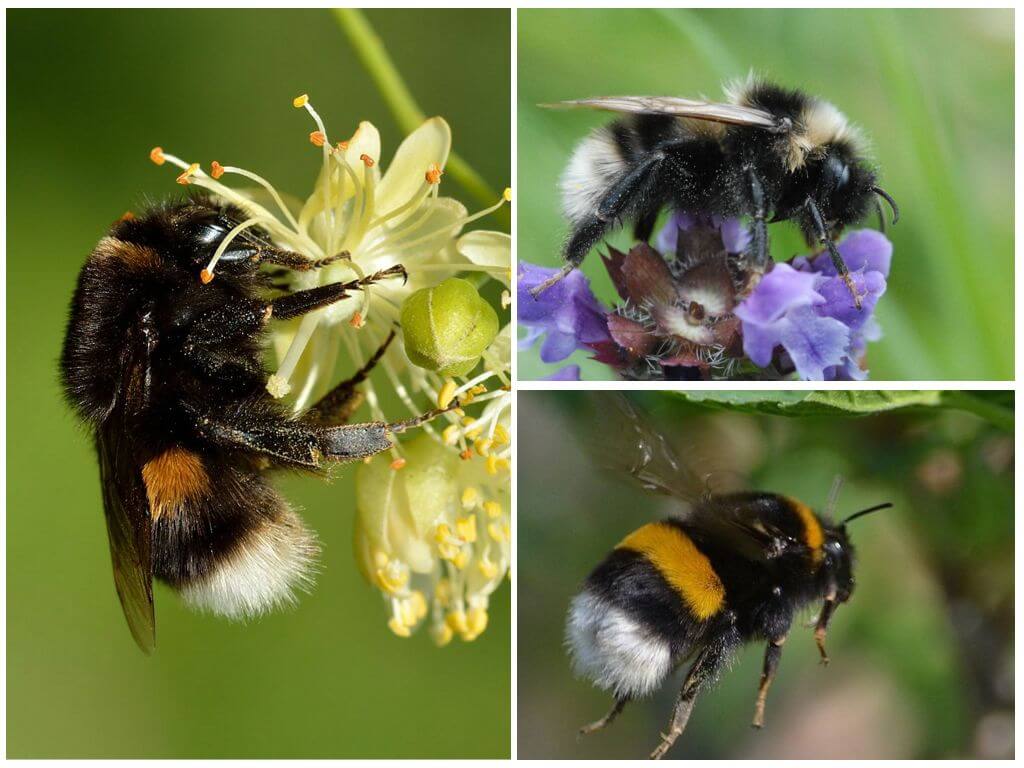
Variegated:
- Garden (B. hortorum L.). Proboscis is very long. Nests in abandoned rodent holes in late spring - early summer.
- Small earthen (B. lucorum L.). This is a small bumblebee, working individuals do not exceed 17 mm. The uterus can grow up to 27 mm, and males 11-22 mm. Lives in the burrows of rodents. Families are large. The structure of the bumblebee is intended for the extraction of nectar from clover flowers, where the insect does not reach a short proboscis. It has a short dense body and is able to gnaw flowers, hanging on the inflorescences.
- Underground bumblebee (B. subterraneus latreillellus Kirby). This largest bumblebee is so called because its nests are only underground. Families are small. The body is elongated. Proboscis is very long. Medium sized working individuals. The species value is determined by the queen of bumblebees, which of all species is the largest in Russia. Breeds in early summer. This is a less beautiful bumblebee compared to the previous ones: the yellow stripes are dimmer, the tip of the abdomen is off-white.
Grayish Yellow:
- Two types of steppe. The proboscis is medium, the body is short. One species has darker wings than another. Nest underground in late spring. The number of families is very variable.
- Forest. Short-bodied small insect. Painted duller steppe. Nesting in May-June in ground or underground nests.
On a note!
The description of the bumblebee of a cuckoo is similar to the descriptions of the females of the above bumblebees. This is due to the parasitic lifestyle of cuckoo bumblebees.
Buffy yellow:
- Commander (B. distinguendus F. Mog.). The trunk is long. The body is oblong large. There are no working individuals. Breeds underground in June - early July. Families are small.
- Spotted (B. maculidorsis Skor.). Similar to the carder, but smaller. There is a stain on the back, not a bandage. Nesting like a carder.
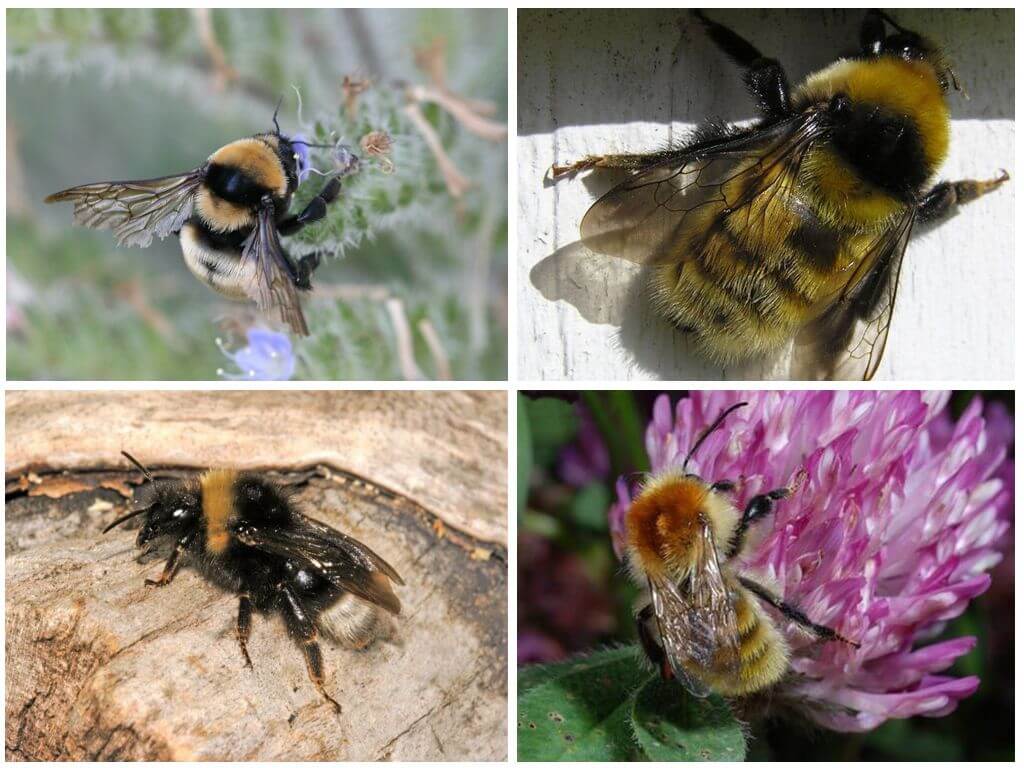
Black:
- Stone (B. lapidarius L.). Large, thick black with a red tip of the abdomen. Proboscis is average. Nesting underground since early spring. Families are very numerous.
- Small stone. The trunk is long. Color varies greatly. Nesting in early spring on earth.
- Horse. Gray with a black stripe on the back. The proboscis is long. The size is medium, the body is oblong.Nesting in May-June in buildings, on the ground, underground, in old bumblebees.
Browns:
- Field (B. agrorum F.). Short oval body, small size, very variable color. Nesting aerial, from early spring. Family size is average.
- Urban. The body is short, dark brown. Proboscis is average. The nesting is extended. It settles on the ground, in hollows, birdhouses, buildings, old bumblebees.
Red and yellow:
- Variable (B. helferanus Seidl). Outwardly similar to field and moss, but the color is dimmer. Proboscis is very long. Breeds on the ground or in old bumblebees. The family of bumblebees of this species is very numerous. Aggressive.
- Moss (B. muscorum F.). The body is oval, short. Small insect. The proboscis is long. Coloring bright golden yellow, back orange. Ground nesting since early spring.
Interesting!
Sometimes a field bumblebee may look like a mossy or mutable.
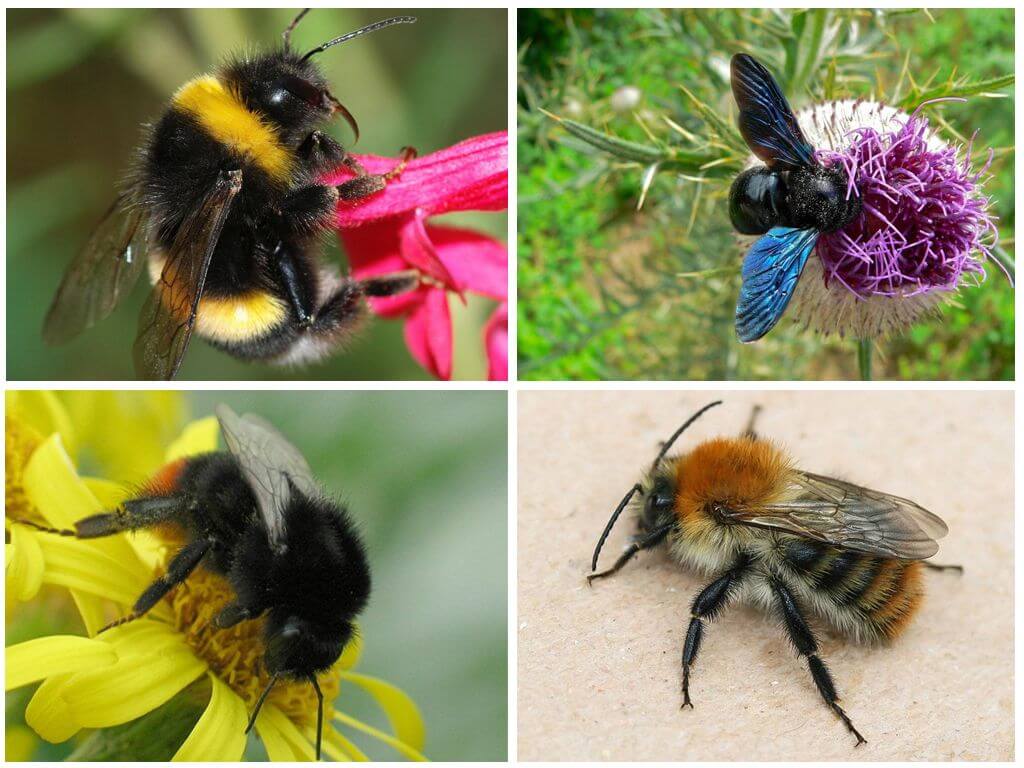
Lifestyle
Bumblebee is useful in nature by pollinating plants that cannot be pollinated by bees. He is the only pollinator of clover. There will be no harvest without bumblebees. Insects can nest in hollows and even on the ground. Ground nest is a sphere made of wax. The shape of the underground and woody depends on the cavity occupied by the family. By the end of summer, the bumblebee’s nest looks like sloppy rags of wax, since during reproduction the uterus lays eggs every time in a new cell, which workers build on the site of the old one.
Interesting!
In the morning at the nest you can hear a bass buzz. For a long time it was believed that this way insects ventilate the nest. Later it turned out that the bumblebee does this in order to warm itself up, since with the active movement of the wings, its body temperature rises 10-30 ° higher than in the environment.
Bumblebee is a social insect. The family has uterus, working females and males. Workers build honeycombs and collect honey, which is worse than bee honey. The quantity of the product is also very small.
The uterus lays eggs in a honeycomb and feeds the first larvae. Later, working individuals do this. The bumblebee larva eats a mixture of honey and pollen, which are brought by working females. Males, having fertilized the uterus, leave the nest forever.
Interesting!
In the absence of the queen, working females can lay eggs.
The life of the bumblebees of the main family is very short. How many bumblebees live depends on their social status: working individuals and males live only in the summer months. The uterus leaves for the winter. Only in tropical areas bumblebees breed all year round, but the life of an individual family is not more than 1 year.
Interesting!
Only one species of Bombus atratus from the Amazon basin has been living for several years.
Bumblebees winter, buried in the ground. But only the queens. The remaining individuals die in the fall. Having woken up in the spring, the uterus finds a place suitable for a new nest and builds the first honeycombs. After which it begins to multiply. Until the first generation of working females grows up, the uterus itself obtains food and looks after the larvae.
It's hard to tell everything about bumblebees, but it is enough for the gardener to know that there is no harm from bumblebees, but there is a lot of benefit.
